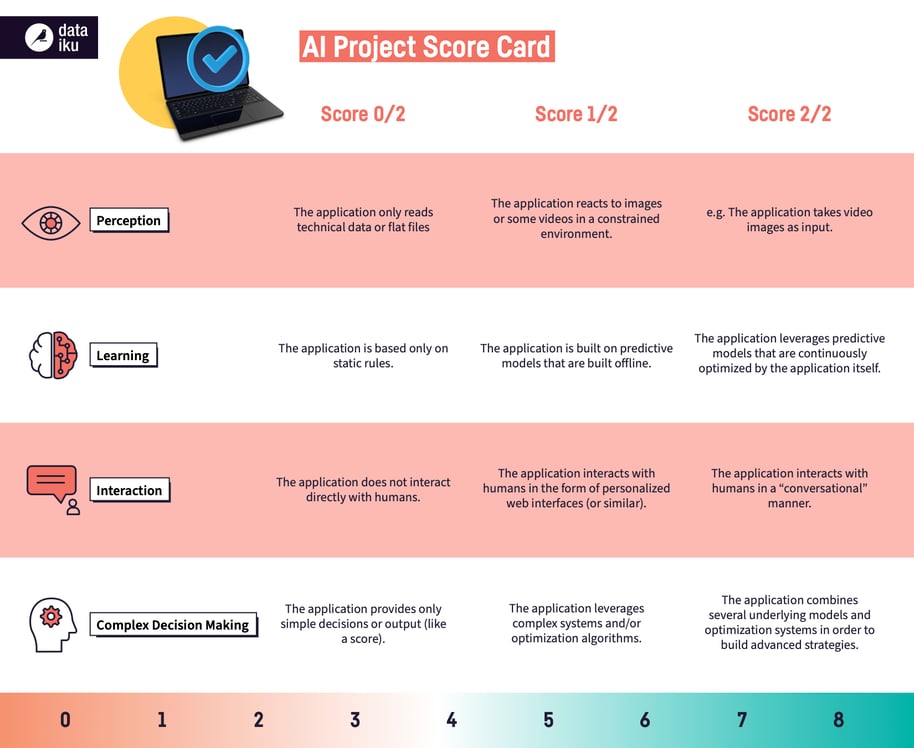There is a lot of hype surrounding AI and, indeed, AI does have tremendous promise. The challenge that many organizations face, however, is trying to figure out what is real and what is fake hype. In a recent EGG On Air Episode, Jeff McMillan, Chief Analytics and Data Officer for Morgan Stanley Wealth Management, shared his views on present AI opportunities versus illusions.
Where Does AI Begin?
First of all, how can you determine if your project is really engaging in AI? How far should an organization go in their efforts? The following score card can help you answer these questions.

Use Cases With High (and Viable) AI Potential
In his talk, Jeff McMillan offered three different use cases that he believes to be very promising AI initiatives.
- Compliance Fraud Detection: Some of the largest AI opportunities start here. There are already very strong prebuilt solutions in the marketplace that organizations can build their infrastructure against with very little effort. The only challenge here is that the frauder may not use the same moves this month as he did last month. These tools thus need to evolve and adapt constantly to work efficiently. That being said, compliance and risk is an area with a lot of potential.
- Client Propensity and Understanding Client Behaviors: Whether through full services, like Morgan Stanley, or call centers, organizations can use AI to drive higher reviews of client satisfaction by recording and analyzing consumer behavior trends, amongst other things.
- Robotics: The bot space marks the move into more challenging areas, but still has promise. Intelligence assistance, including online customer service chatbots for example, offers tremendous promise, but it is also still accompanied by various challenges. The ability to interact with machines to uncover deeply buried organizational information and knowledge is a powerful concept of immense value. The problem, however, is that artificial intelligence cannot function without human intelligence.
You cannot just dump a bunch of pdfs into these machines. It takes thousands of hours to curate this content.”
Will Robots Replace Humans?
One common misconception surrounding AI is believing AI and machines will replace humans. These machines and tools are very good on single-line based decision making, like for choosing a financial advisor for a client around investment. But as organizations start to expand to multidimensional types of questions, such technologies cannot function without human intelligence.
There is some perception out there that human decision making is going to be dumped into these machines. It’s not happening.”
While tools may become more efficient and effective over time, today organizations are still struggling to get real value out of these machines for certain tasks. The technology is simply not there yet.
My strong recommendation is to stop trying to eliminate the human out of the equation.”
Instead of attempting to replace humans, organizations should think about how they can get humans and machines to work together. The future, at least for the next five to ten years (or even longer), should consist in taking very smart people with really good predictive analytics and putting those pieces together.
I personally think that is the winning combination, at least for the near future.”
Where Does AI End?
Another common perception is believing that the work is done when the model is delivered. Actually, model delivery is when the project really starts. The work is not done until organizations are able to measure the impact of their work. They need to follow their clients’ journeys to determine if their model works. They should also go back and figure why their model worked or did not work.
- Did it work for the reasons they had anticipated it would work?
- Or did something unexpected have positive effects on the model?





